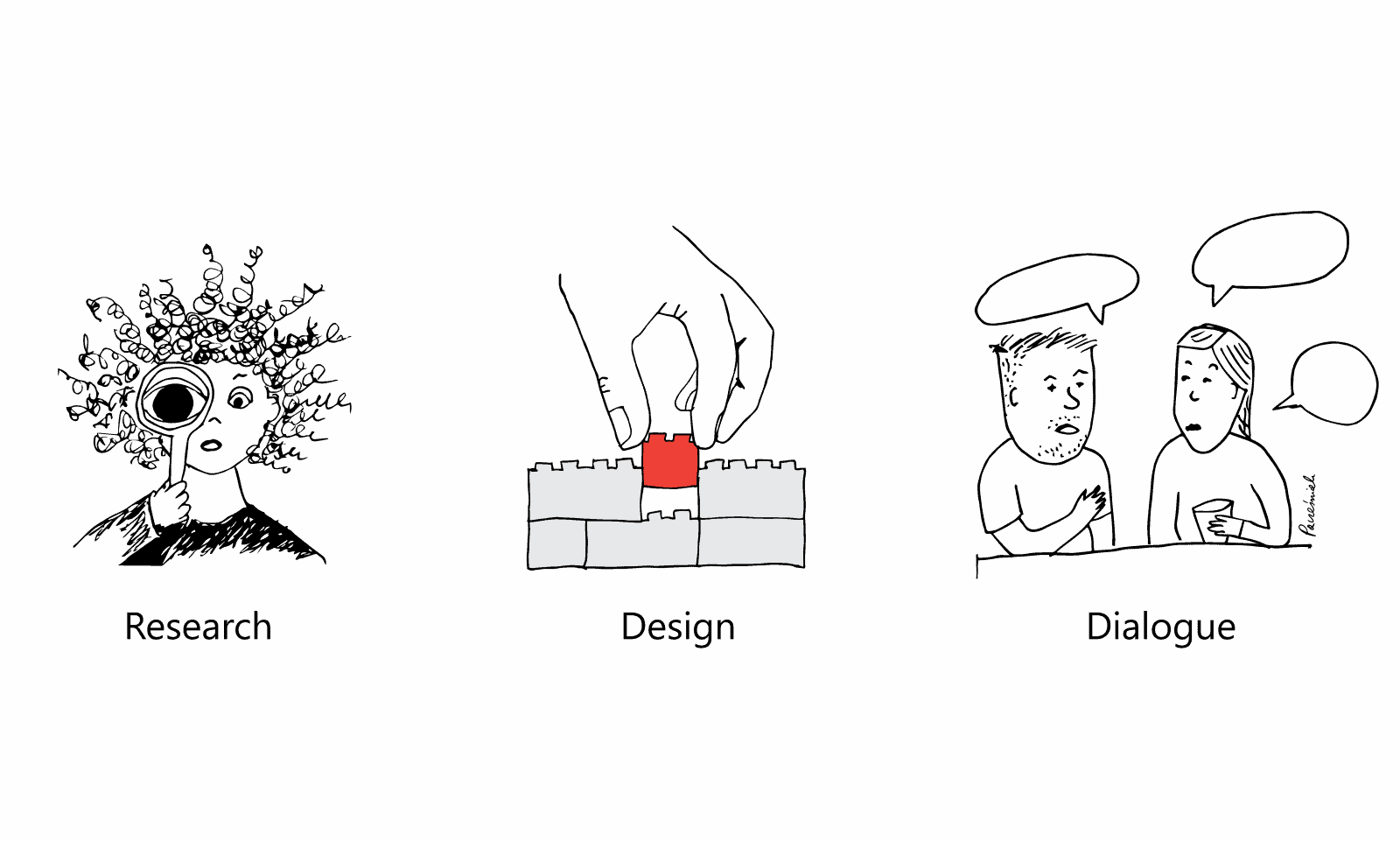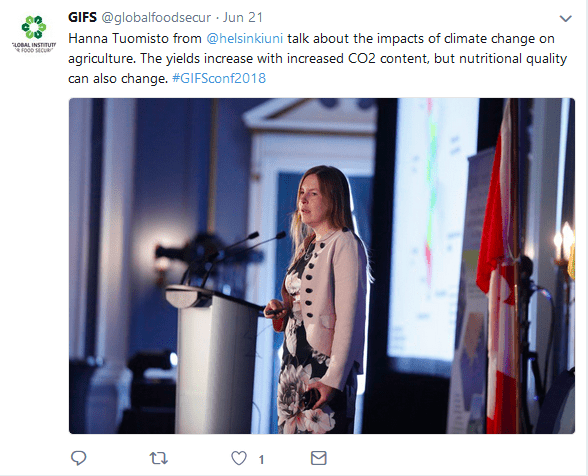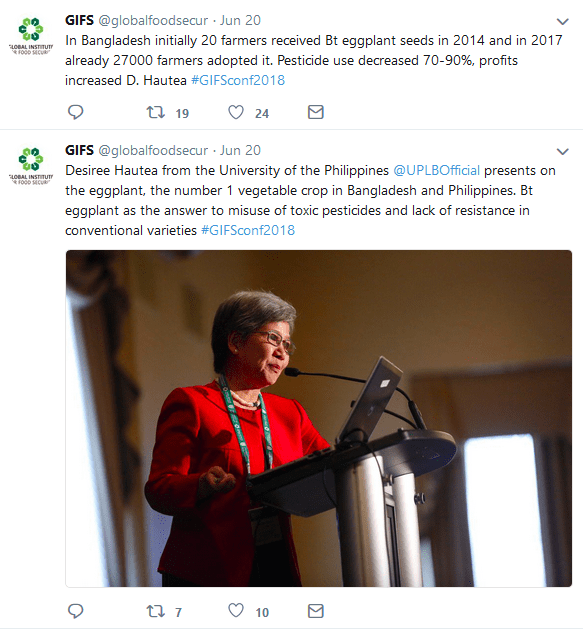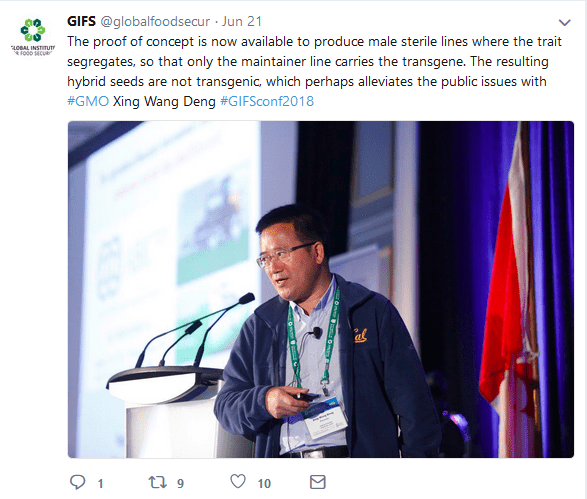2018
Guest Post: Design and Dialogue is what global food security needs – apart from Research, obviously.

Lessons from the Emerging Technologies for Global Food Security Conference (Saskatoon, Canada, June 19-21, 2018)
by Dorota Paczesniak
By the year 2050, world population is expected to surpass 9 billion. How do we create sustainable solutions for the nutritional needs of this growing population? This is the core question of the field of Global Food Security. Advances in research – especially in the areas of plant and soil science – are essential to finding new approaches to transform agriculture. But to achieve this transformation, science alone is not sufficient. The recent Emerging Technologies for Global Food Security Conference exemplified that discovery research is only the first step. The next step is to make use of the knowledge and move into design. The designs for sustainable agriculture can be wide-ranging – from new crop varieties that are more nutritious, disease-resistant, or able to withstand drought, all the way to designing gender-sensitive policies that benefit African smallholder farmers. But that’s not all. Another crucial element required to transform research into solutions is dialogue. Effective dialogue, or more broadly communication, needs to happen between scientists, the public, and policy makers. Communication is not only about transferring information, it is also essential for building trust and understanding between these stakeholders. This is, in turn, crucial for the successful implementation of evidence-based solutions for feeding the world’s population. In this article I will give you some highlights from the Emerging Technologies for Global Food Security conference, focusing on the three concepts of research, design and communication.
Research
The core program of the Emerging Technologies for Global Food Security Conference featured research on diverse topics ranging from plant phenotyping to genomics, from pests and diseases to abiotic stress, as well as soil health and vaccine development.
Some of the highlights included Rob Martienssen from Cold Spring Harbor Laboratory and the Howard Hughes Medical Institute, who talked about epigenetic inheritance, or non-genetic influences on gene expression. His research demonstrated that epigenetic re-programming underlies a specific undesirable phenotype in oil palms. Following this discovery, a genetic test was developed which allows us to detect these mutants before the palm trees are planted – one development that can make oil palm plantations more efficient.
Hanna Tuomisto from the University of Helsinki presented on the environmental impacts of agricultural systems, for example, assessing environmental footprints of protein production or the effects of different farming practices on biodiversity.

Another research highlight was a presentation by Giles Oldroyd of Cambridge University, who talked about biological nitrogen fixation. Nitrogen is an essential nutrient commonly supplemented via fertilizer. Many plant species, for example legumes, evolved beneficial interactions with nitrogen-fixing bacteria, which enable these plants to access nitrogen straight from the atmosphere. This mechanism evolved from the pre-existing symbiosis between plants and fungi. Understanding the evolutionary history of these processes shed the light on common molecular mechanisms, which could enable the engineering of nitrogen-fixing symbiosis in cereals.
Design
Translating the knowledge derived from basic research into solutions to be applied in agriculture is really a design (or engineering) endeavor. Obviously, there is a lot of research going into all aspects of these designs, but to evaluate them takes more than just judging the quality of the science. It is about sustainable environmental effects, as well as desirable socio-economic impacts. The Emerging Technologies for Global Food Security Conference featured numerous presentations which showcased ingenious designs – ranging from genetic engineering to policy and educational programs.
Genetic engineering technologies enable crop plant “designs” which otherwise wouldn’t be possible. Jonathan Napier from Rothamsted Institute presented on metabolic engineering of the Omega-3 fatty acids (“fish oil”) in an oilseed plant Camelina. These compounds have documented health benefits, but the rising consumer demand (especially from fish farming) exceed the amount that can be obtained from sustainable fisheries. The engineering of a stable biosynthetic pathway taken from marine micro-algae in a terrestrial plant has been successful based on completed field trials, and the effectiveness of the bioengineered Camelina as an aqua feed diet has been also positively evaluated.
Another genetic engineering example, presented by Desiree Hautea from the University of the Philippines, was Bt eggplant. Introducing Cry proteins from the bacterium Bacillus thuringiensis (Bt) has been a successful method for controlling insect pests in maize and cotton globally, while reducing pesticide use. The eggplant is a primary vegetable crop in many of the South-East Asian countries and its main insect pest, the eggplant fruit-and-shoot borer (Leucinodes orbonalis), causes severe losses. Bt eggplant went through successful field trials and its adoption largely reduces the use of chemical pesticides, which otherwise pose risks to human health and to the environment. So far only Bangladesh has approved the crop for commercial use, with 27,000 farmers adopting it within the first three years. India and the Philippines are actively working on legislation that would allow farmers to access the benefits of this crop.

Designing and implementing policies for global food security can be an arduous path to climb. As Dame Anne Glover from Strathclyde University, the former Chief Scientific Adviser to the President of the European Commission, put it: “We’re outstanding in generating knowledge, but translating evidence into policy is a challenge”.
One of the speakers presenting on policies related to agricultural biotechnology was Margaret Karembu from ISAAA AfriCenter. She presented on the regulatory and communication landscape for emerging technologies in Africa. The majority of African farmers still farm for subsistence (not as commercial operations), using traditional labour-intensive methods. Therefore, the potential benefits from adopting modern biotechnology are immense. In her talk, Karembu stressed that external influences (for example from European market and policies) lead to impasse and indecisiveness at the policy level, and only four African countries have adopted genetically engineered crops to date. She advocates for regulation of biotechnology products on a case-by-case basis, not on the basis of technology (as it is regulated currently in European countries). “Africa has come of age,” she remarked, and can now become a leader, instead of just being a follower, when it comes to implementing innovations in agriculture.

Dialogue
Communication is essential for the successful translation of discovery research into technological solutions. Without public understanding of science we can’t obtain the social license for technological advancements and evidence-based policies. Therefore we need dialogue – between the scientists, the public, and policy makers.
The Emerging Technologies for Global Food Security Conference illustrated excellence in communication in multiple ways. First, it fostered the interdisciplinary exchanges of ideas by bringing together researchers from a variety of disciplines. Secondly, the speakers were not only researchers but also politicians and representatives of business. In order to widen public outreach all sessions were live-streamed online, and the conference featured a debate* with public participation, which was attended by residents of Saskatoon. The conference was also disseminated on Twitter under #GIFSconf2018.
A pre-conference seminar “Science and the media – the view from the front line” featured two speakers: Fiona Fox from the Science Media Center in the UK and Kevin Folta from the University of Florida; the latter presented again in the core conference program. The Science Media Center brings together scientists and journalists so that science can be adequately represented when scientific discoveries make headlines. “We need to help the media do science better by getting scientists to do the media better,” said Fiona Fox. The Science Media Center works with scientists to help them engage with the media, so that the voices of experts are heard when it comes to daily news related to scientific, environmental or health issues. Kevin Folta urged scientists to speak up about their work and what the evidence says. He also gave practical tips for scientists to become better public communicators – first, listen to understand your audience’s concerns; second, build trust over shared values; and finally, present evidence that reinforces these values.
Among other presenters speaking about communication was Sarah Evanega, the director of the Cornell Alliance for Science. This organization “seeks to promote access to scientific innovation by means of enhancing food security, improving environmental sustainability and raising the quality of life globally,” as their mission statement proclaims. They provide communication training programs for community leaders so they can promote evidence-based decision-making in agriculture in their respective communities.
Communicating about biotechnology, and especially genetic engineering presents a challenge in our society, where the “anti-GMO” message is widespread in media and marketing. Regulatory processes for genetically engineered products are very stringent in all countries that have adopted the technology to date. On the one hand, “GMO” products undergo the most rigorous testing and are the most extensively tested for safety of all food products; on the other hand, it reinforces the public notion that genetically engineered products are inherently dangerous. One of the conference speakers, Xing Wang Deng from Peking University presented on the development of the novel hybrid seed production technology for rice and wheat. To effectively produce hybrids, one of the parents in a cross needs to serve as male and another as female – the tricky part is that the majority of crop plants are hermaphrodites (male and female at the same time). That’s why producing male-sterile lines is of high importance, but current methods have limitations. Xing Wang Deng presented a new method developed using a transgene (insertion of foreign DNA) in a specific genomic location, so that the resulting male sterility segregates in the offspring. Only half of them carry the transgene (so called “maintainer line”), and the resulting hybrid seeds do not contain the foreign (transgenic, “modified”) DNA. This is an example of an ingenious use of transgenic technology, where the resulting product doesn’t contain the transgene. Therefore these novel hybrid seeds can be delivered into the hands of farmers much quicker, bypassing the hurdles of current GMO regulations in China.

Can scientists play an active role in educating the public and the policy makers about biotechnology? I think the answer is yes. Importantly, as natural scientists, we should be careful not to reinforce the notion that transgenic per se is something undesirable or to be avoided. Rather, as biologists, we should be educating the public that horizontal gene transfer (transfer of genetic material from one unrelated organism to another) commonly happens in nature. For example, genome of an insect, the pea aphid, contains genes from fungi, and plants such as tobacco and sweet potato have bacterial genes incorporated in their genomes. Transgenesis is a method in biotechnology that utilizes this naturally occurring process – delivery of genes from one organism to another. For example, it was used to create the “rainbow” variety of papaya, by incorporating virus genes which provides resistance to papaya ringspot virus. Thanks to Vanessa Greenlee and Sarah Evanega from the Cornell Alliance for Science, conference participants had a chance to taste this delicious papaya, one great example in which modern biotechnology benefits agriculture by saving papaya from a devastating disease.

Horizontal gene transfer is a naturally occurring process in which genetic material is transferred from one unrelated organism to another. For example the pea aphid contains genes from fungi, and bacterial genes (from Agrobacterium) are incorporated in tobacco and sweet potato genomes. Transgenesis is a method in biotechnology where genetic material from one organism is incorporated in another. It was used e.g. to create the “rainbow papaya” variety which by incorporating virus genetic material provides it with resistance to papaya ringspot virus. Illustration by Dorota Paczesniak.
The goal of achieving global food security requires overcoming many extreme challenges: climate change, population growth, and the environmental impacts of agriculture itself, to name just a few. Despite these challenges, I think we can be optimistic about the future. As the Emerging Technologies for Global Food Security Conference demonstrated, the pathway to success lies in top-quality science producing ingenious technological and policy solutions. It is then up to us to be part of the global conversation which can catalyze societal and cultural change that enable their implementation.
* The topic of the IQ2 Debate: “Agriculture And Forestry Hold The Solution To Mitigating Atmospheric CO2 And Climate Change”
Dorota Paczesniak is a Postdoctoral Fellow, Seed and Developmental Biology at the Global Institute for Food Security. Dorota’s scientific interests revolve around causes and consequences of diversity, especially how diversity is generated and its role in asexual organisms. At GIFS, her research concerns seed size diversity and endosperm development in sexual and apomictic (reproducing asexually via seed) plant genus Boechera.
Note: Guest posts to the GIFS blog are the opinions of the writer and may not necessarily reflect the opinions of the organization as a whole.
